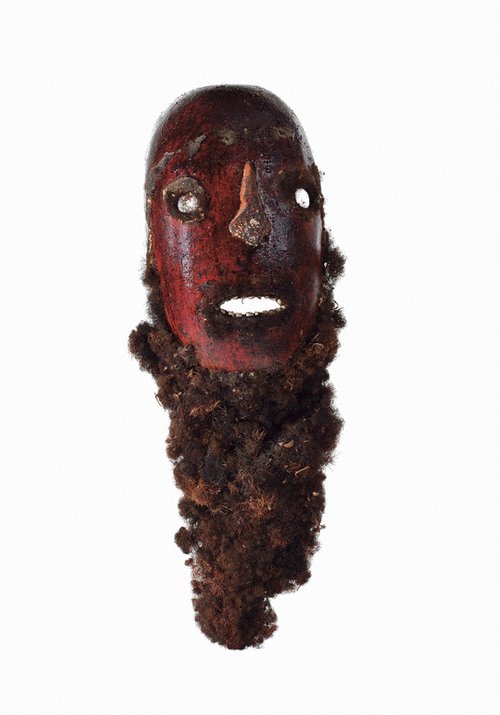Title
Eláyaborr (shoulder shield)
early 20th century
collected 1963
Artist
-
Details
- Place where the work was made
-
Bela
→
Mendi
→
Southern Highlands Province
→
Papua New Guinea
- Cultural origin
- Mendi people
- Dates
- early 20th century
collected 1963 - Media category
- Arms & armour
- Materials used
- wood, incised
- Dimensions
- 66.0 x 36.0 cm
- Credit
- Gift of Jean Moriarty 1979
- Location
- Not on display
- Accession number
- 473.1979
- Artist information
-
Mendi people
Works in the collection
- Share
-
-
About
Prior to the arrival of Europeans, warfare between Mendi tribes and clans was endemic. The 'eláyaborr' shield, due to its small size and light weight, was commonly used in skirmishes and village raids, slung under the shoulder in battle to protect the torso and leaving both hands free for firing a bow and arrow. The U-shaped notch at the top allowed an archer to look through the gap to shoot.
This shield has the remains of a cane sling, which would have been strung diagonally from the top left to lower right side (from the rear of the shield), knotted through two holes. A third hole along the lower centre left edge may have been incorrectly placed.
The outline of the design on this 'eláyaborr' is incised and anthropomorphic in character, with a stylised head, arms and legs. Remains of a pale natural clay covers the surface. A pattern of fine scored lines fills the negative spaces to the left and right of the central figure. Australian anthropologist D'Arcy Ryan, who first undertook research in the Mendi region in 1954, noted that this scoring might indicate skin and body hair.
For further information see D'Arcy Ryan, 'Decorated fighting-shields from the Mendi Valley, Southern Highlands District of Papua', Mankind, vol 5, no 6, Oct 1958.


